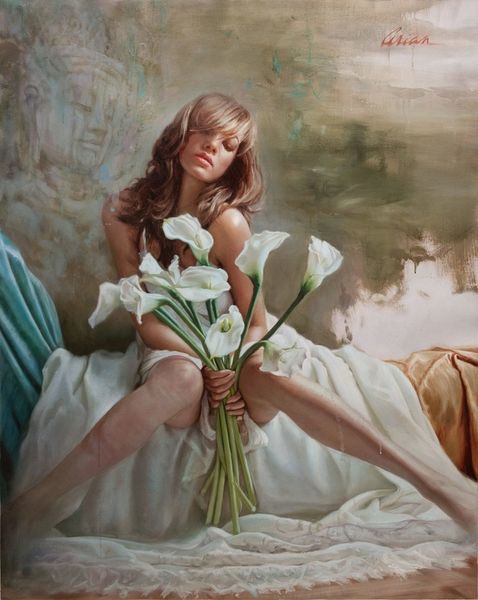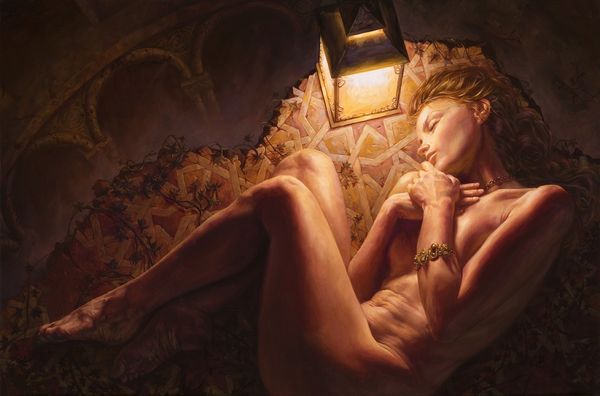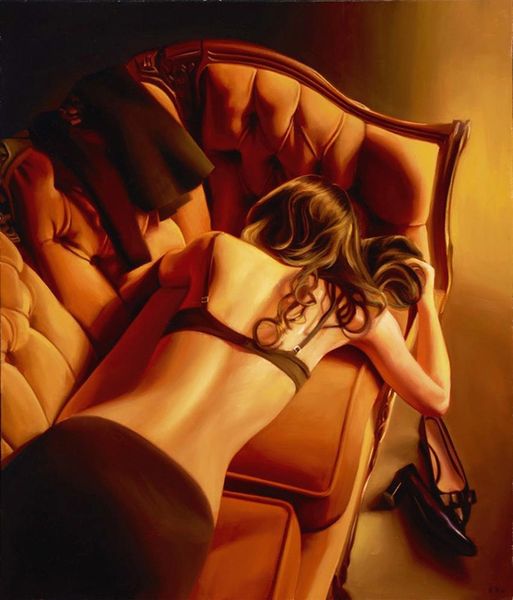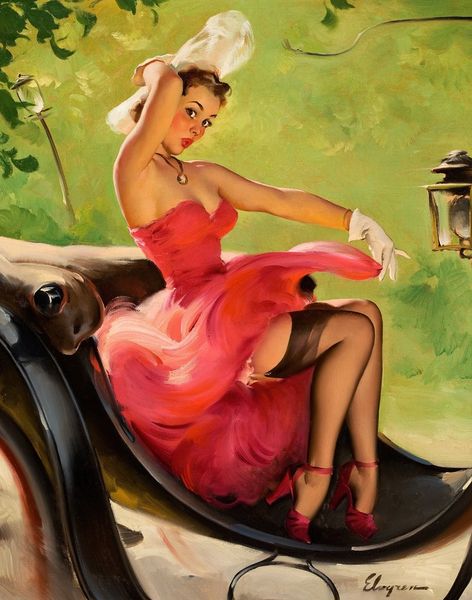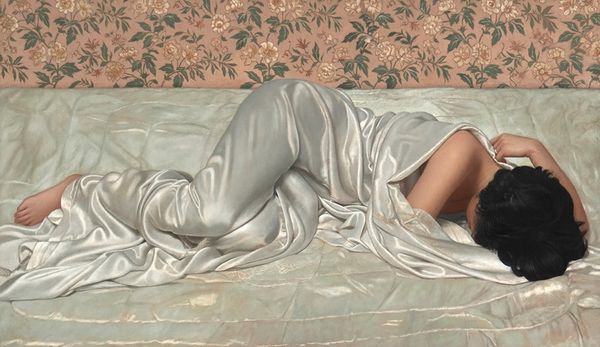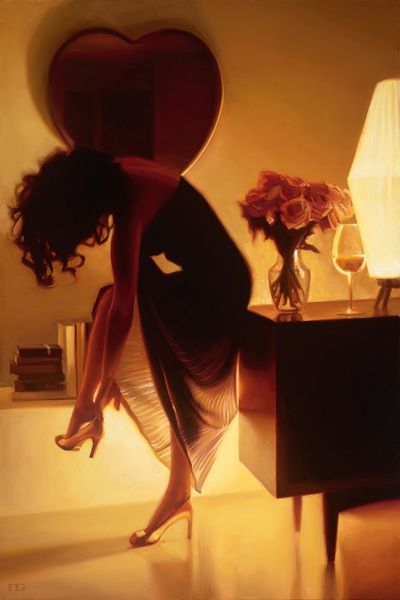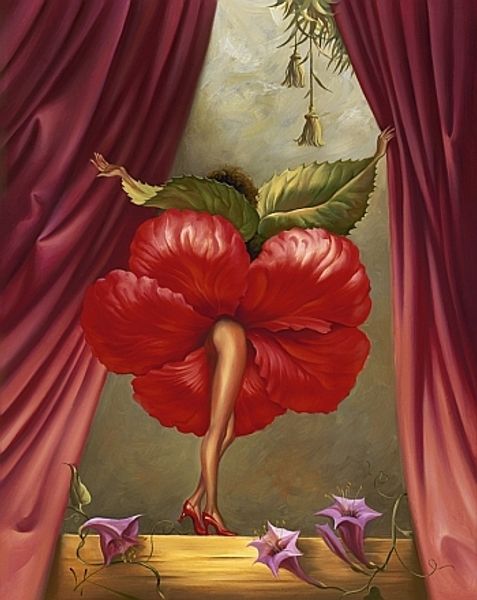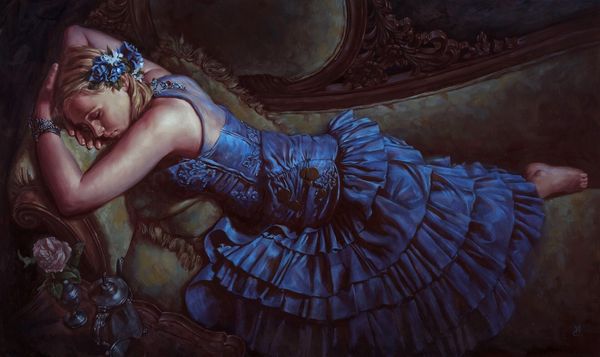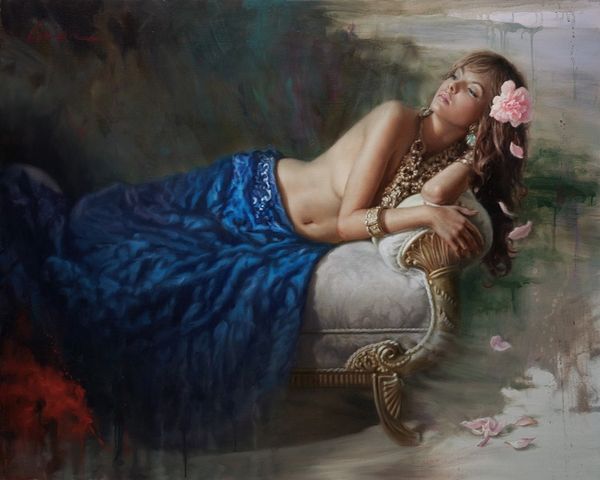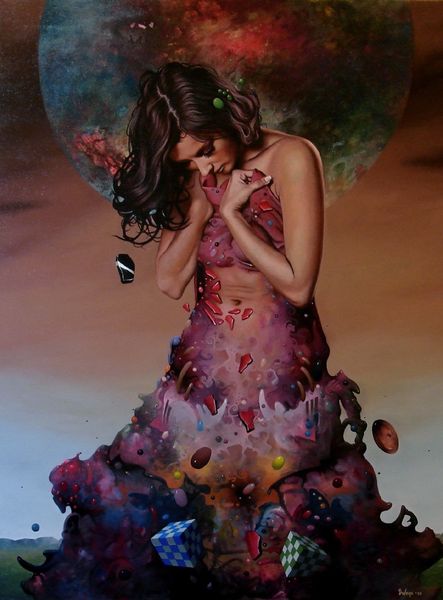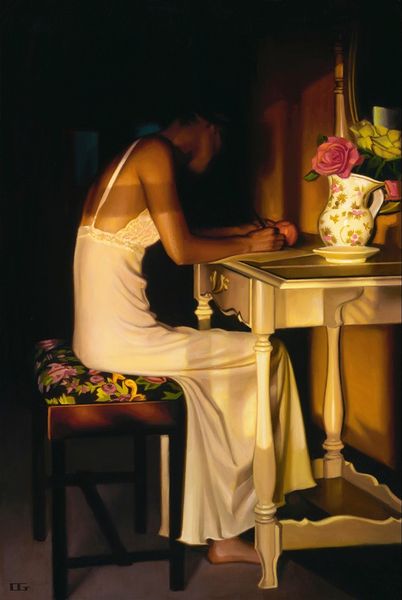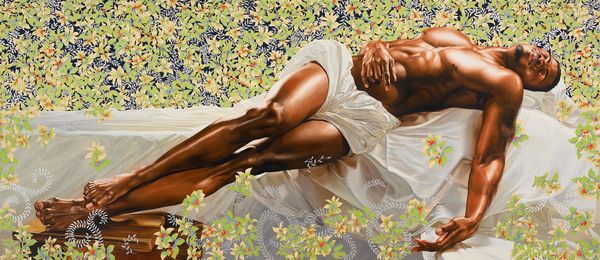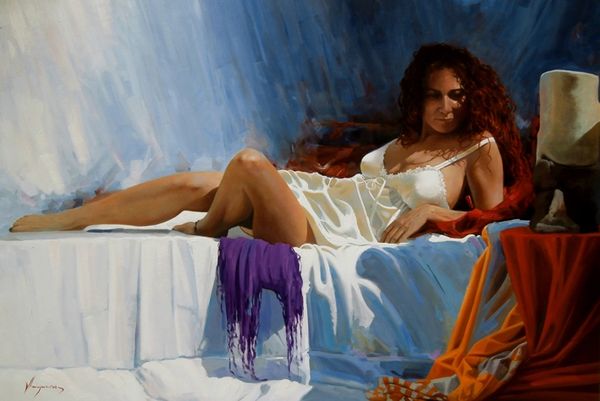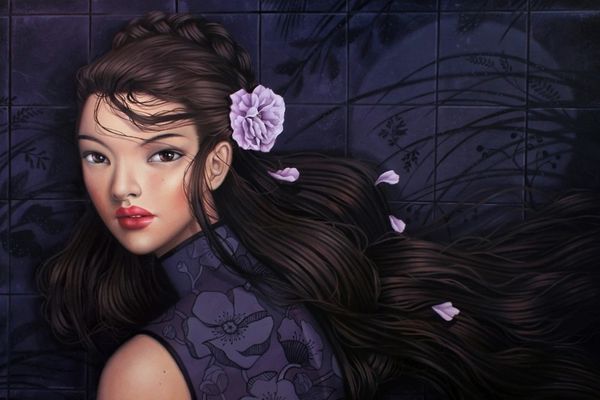
painting, oil-paint
#
portrait
#
figurative
#
painting
#
oil-paint
#
figuration
#
erotic-art
Copyright: Modern Artists: Artvee
Editor: "Close as Roses" is the title; we don't have a date for this oil painting by Carrie Graber. What strikes me first is the composition—a figure reclining amidst roses and an old-fashioned telephone. There’s a stillness, an almost performative sense of femininity in the rendering. What do you see in this piece from your perspective? Curator: Indeed. The immediate allure resides in the orchestration of forms, colours, and textures. Notice how the curvilinear forms of the roses are mirrored and contrasted by the hard geometry of the telephone and then are softened by the diaphanous drapery of the woman's dress. The interplay of the composition directs our eye. Is this a meditation on form itself, perhaps? Editor: I didn’t immediately notice how the composition creates a contrast. But what’s your take on the tonality – that almost sepia-like color palette? Curator: The limited palette— predominantly variations on red, pink, and cream— generates an atmosphere of both warmth and enclosure, reinforcing a specific mood that might not immediately be so obvious if, say, a pop-art inspired palette had been introduced. Now look closer, how the folds of fabric are meticulously articulated and suggest the tension and form, all within similar colour values. It reinforces the mood that a sharper rendering wouldn't create. Don't you think? Editor: I think that's a keen insight; the subtlety almost invites closer viewing. It feels like a very interior space – emotionally, not just physically. Curator: Precisely. A painting like this foregrounds how formal decisions of line, colour, form, and texture create an aesthetic, expressive whole. It allows us to engage with how our understanding is filtered through our sensory perception. Editor: I hadn't really considered that. Thinking about just the colour and shapes reveals how much information we get from the purely visual elements. Curator: Yes, sometimes appreciating what an artwork *is*, as an object in itself, before rushing to symbolism can tell us the most.
Comments
No comments
Be the first to comment and join the conversation on the ultimate creative platform.
